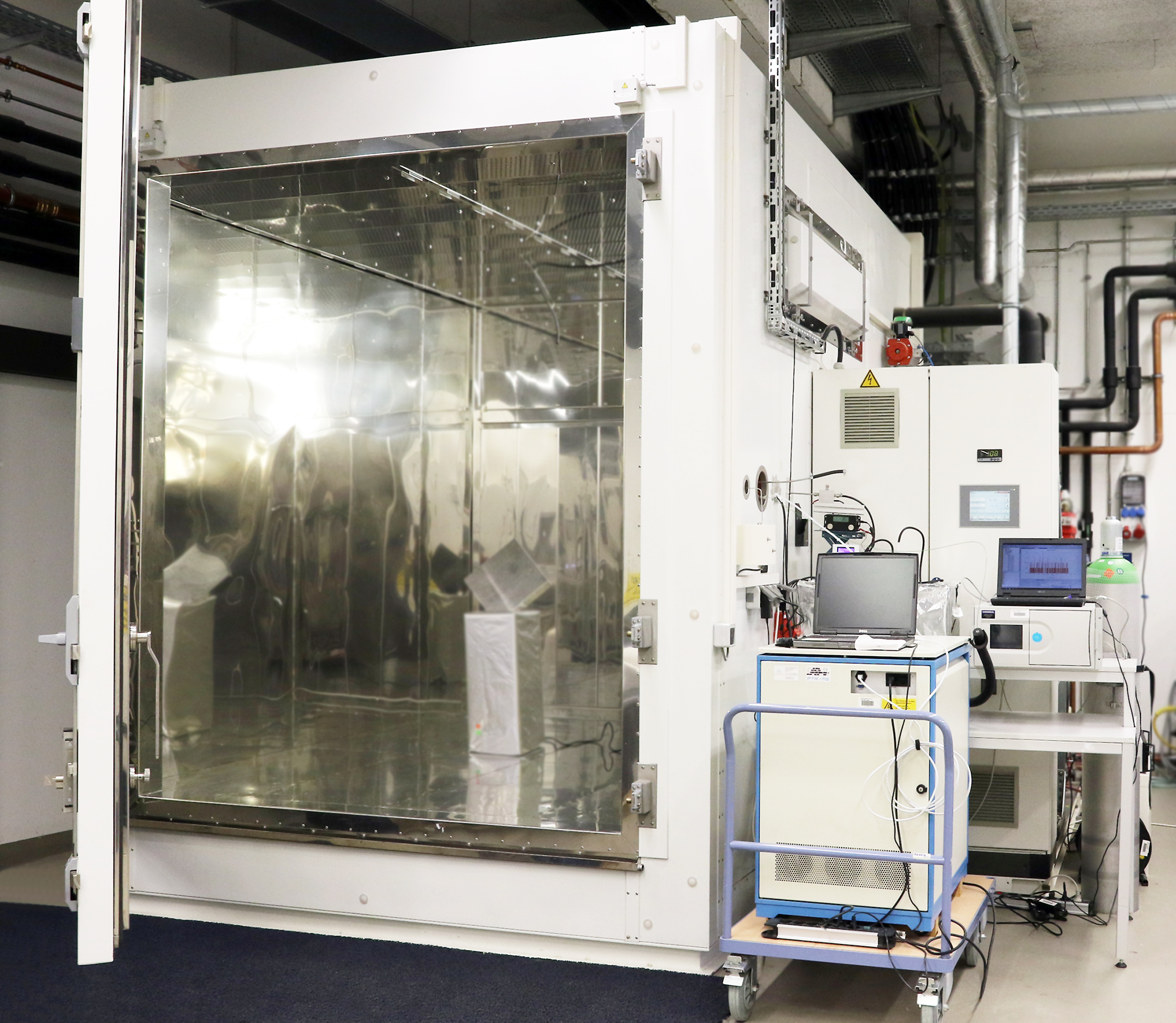In the majority of cases, ventilation is the best solution if the indoor air has been contaminated by foreign substances. This is, however, not always possible, for example when the outdoor air is heavily polluted or the possibility of ventilation is rendered impossible through structural restrictions or noise.
Effectiveness of air purifiers
Research focus
In such situations, concepts for purifying the room air are taken into consideration. For this purpose, air purifiers are deployed, which are either incorporated into existing room air conditioning systems or operated as independent devices by the room user.
Due to the problematic outdoor air quality in the megacities worldwide, the range of available air purifiers has expanded considerably in recent years: from simple fan-filter combinations that only eliminate dust and particles, through specifically modified multiple-filter solutions that bind specific organic substances or decompose harmful gases, on to electrochemical, photocatalytic or plasma-based air purifiers that promise maintenance-free and efficient air purification.
Air purifiers are deployed in order to eliminate, for example, particulate matter, odorous substances or harmful gases (such as NOX, ozone or sulfur dioxide) - they are, unfortunately, unable to replace the oxygen consumed by the inhabitants or bind the CO2 released through respiration.
Not all air-purifying principles are suitable for all air pollutants; some procedures are more efficient than others, and some filters require a more frequent replacement than others. Test procedures have therefore been developed in order to measure and compare the performance capabilities of air purifiers.
Under certain conditions, air purifiers can also lead to room air being additionally contaminated during their use or less problematic substances being decomposed into toxic substances.
In order to provide assistance in the development and optimization of air purifiers, we offer a variety of analysis methods including:
- Determination of degradation rates of individual substances and possible by-products
- Analysis of the function under real operating conditions (room-sized test chambers, natural sources, online mass spectrometry)
- Determination of performance parameters (“clean air delivery rate”, capacity tests, GB/T 18801)
- Secondary reactions (ozone formation, origination of ultra-fine particles)
We are able to dose relevant harmful gases (e.g. NO, NO2, SO2, O3, NH3, HCHO) in typical concentrations and to analyze the response behavior of air purifiers. In addition, we have more than 1,500 volatile organic substances as pure substances on hand and are able to dose these individually or as a compound in desired concentrations. With the aid of a special Challenge chamber, air purifiers can also be pre-polluted in the high concentration range.
For many harmful gases, we offer online analytics with a time resolution in the range of seconds to minutes. In the case of volatile organic substances, online mass spectrometry is applied.
 Fraunhofer Institute for Wood Research
Fraunhofer Institute for Wood Research 